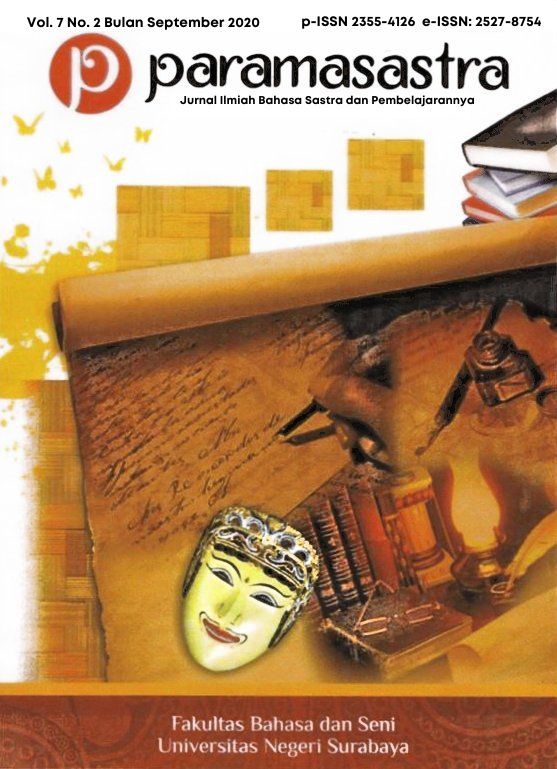HANASHIKATA TEACHING MATERIAL DEVELOPMENT
DOI:
https://doi.org/10.26740/paramasastra.v7n2.p147Keywords:
Hanashikata, Teaching Materials, Quality of Teaching MaterialsAbstract
The compulsion to enter Hanashikata (speaking Japanese) class really makes it difficult for them to adjust to the learning process of Japanese speaking skills. There are many ways to improve speaking skills, but researchers prefer to develop teaching materials because they have a special attraction for students. Why is that? First, students compile a narrative first, they accidentally learn to arrange sentences according to correct Japanese grammar. If the sentences they produce are not in accordance with the correct grammar and correct vocabulary, it will make understanding difficult for the interlocutor or those who are listening. This can be used as a venue for the development of Hanashikata (Speaking Japanese) teaching materials.The objectives of this study are 1. To describe the quality of the feasibility of Hanashikata teaching materials for class B students of class B Japanese Language Education Study Program, FBS Unesa 2. To describe student responses to the development of Hanashikata teaching materials. This research is a development (R&D). The research subjects were 2018 class B students of the Japanese Language Education Study Program, FBS Unesa. The research data were in the form of the development of Hanashikata teaching materials, the quality of teaching materials and student responses to the development of Hanashikata teaching materials. Data analysis using descriptive method. The results of the first problem formulation research indicate that the average score of the validation results by experts on the feasibility of the Hanashikata teaching material used is known that the average score of the observer is 3.81. These results indicate that the development of Hanashikata teaching materials is categorized as feasible. The result of the second problem formulation research is that the student response shows higher learning outcomes after being given the development of Hanashikata teaching materials compared to learning outcomes before being given the development of Hanashikata teaching materials. Testing student responses using the Independent Sample T-Test.Downloads
Published
2022-03-14
How to Cite
Retnani, R., Nurhadi, D., & Mael, M. R. (2022). HANASHIKATA TEACHING MATERIAL DEVELOPMENT. Paramasastra : Jurnal Ilmiah Bahasa Sastra Dan Pembelajarannya, 7(2), 147. https://doi.org/10.26740/paramasastra.v7n2.p147
Issue
Section
Articles
 Abstract views: 314
,
Abstract views: 314
, PDF Downloads: 227
PDF Downloads: 227












